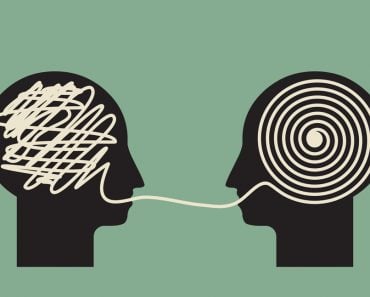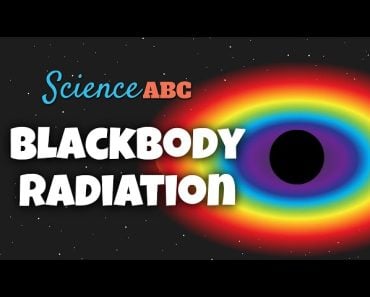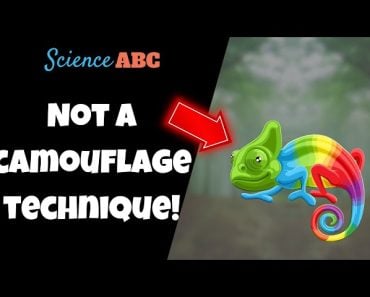Table of Contents (click to expand)
Color is both real and fiction. Light is composed of different wavelengths of light. Our eyes can perceive these different wavelengths and they correspond to a “color”. Therefore, a wavelength of 400 nanometers appears violet, while 700 nanometers appears red. However, a wavelength of 100 nanometers, which falls into the UV range, is invisible to us—although bees can see it!
If prompted to picture a banana, most of us would likely envision a yellow-colored fruit with its distinct elongated shape. The idea of a transparent or orange or purple banana is ludicrous. Color significantly contributes to how we perceive and imagine things, enriching our visual experiences and imparting meaning to the world around us, but what exactly is color?
Think about the “yellow” in the banana you pictured. Is this yellow an intrinsic quality of the banana itself, residing within the peel as a fundamental and inherent attribute of the fruit? Or is it a perceptual construct formed by the intricate workings of our brain… is it an illusion of color? These questions are at the heart of the debate about what color truly is, whether it’s a physical or chemical aspect of things, or if it’s something the brain creates.
Recommended Video for you:
What Is Color And How Do We See It?
Color is defined as a physical property intrinsic to matter. When light strikes an object’s surface, the object absorbs certain wavelengths and reflects the others. The emitted wavelengths then reach our eyes, enabling us to perceive color.
Humans can only register wavelengths between 400-700 nanometers, what we call the visual spectrum. This is a small portion of the vast electromagnetic spectrum, which includes radio waves, microwaves, infrared radiation, visible light, ultraviolet light, X-rays, and gamma rays. The wavelength of 700 nanometers appears red, while one of 400 nanometers appears violet, but a wavelength of, say, 100 nanometers is invisible to us.
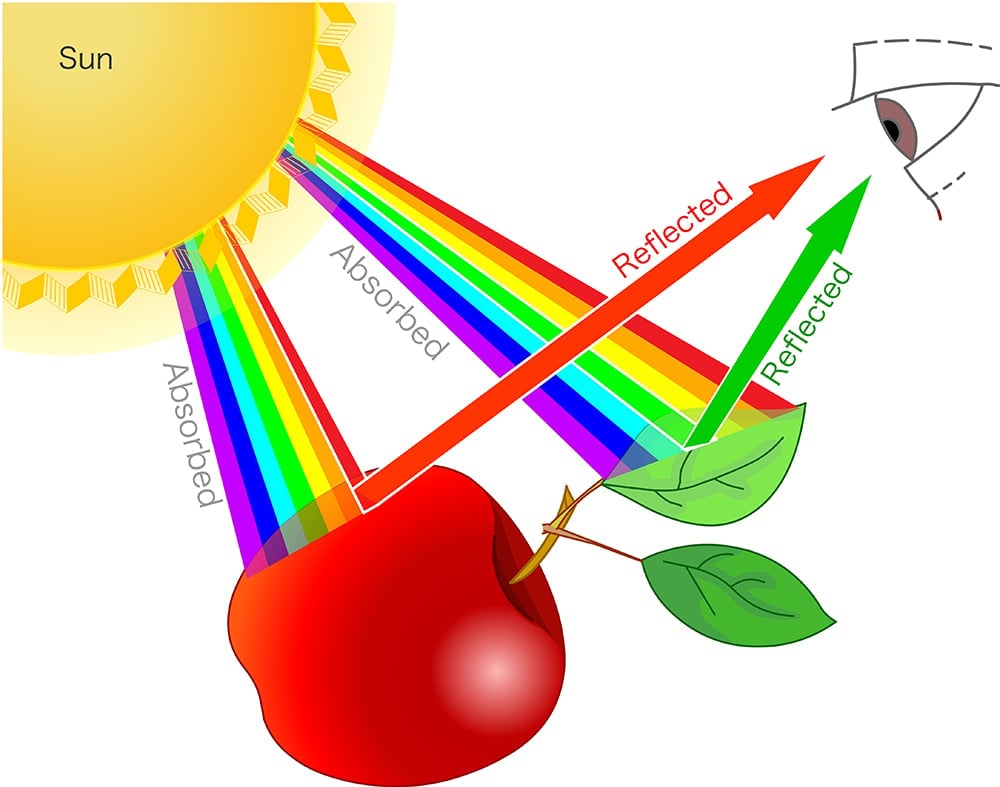
Physiologically, the retina, located at the back of the eye, perceives light. It houses photoreceptor cells known as rods, which are responsive to low or dim light, and cones, which react to brighter conditions. These cells react to different wavelengths of light, sending signals to the brain via the optic nerve. The signal is relayed first to the thalamus region and subsequently to the visual cortex, where color information is merged with other visual data, like shape and motion, culminating in a comprehensive image.
At first glance, this scientific explanation validates the assertion that color is an attribute of matter, rather than a product of the brain’s imagination.
But hold on!
If color is an inherent property of matter, shouldn’t the color of an object be the same for everyone? Yet, haven’t we all found ourselves in disagreements over the color of an object? As the famous saying goes, “My red is not your red.” For a clear example, let me (re)introduce you to the infamous dress.
Same Object, Different Color
In 2015, a social media post featuring a dress worn at a wedding triggered intense debates about its color. Two camps emerged. While some adamantly saw the dress as blue and black, which happened to be the actual color of the dress, others insisted it was gold and white.
This was a curious question for scientists as well, who wondered why the brains of different people were tricking them into seeing the colors of the dress differently.
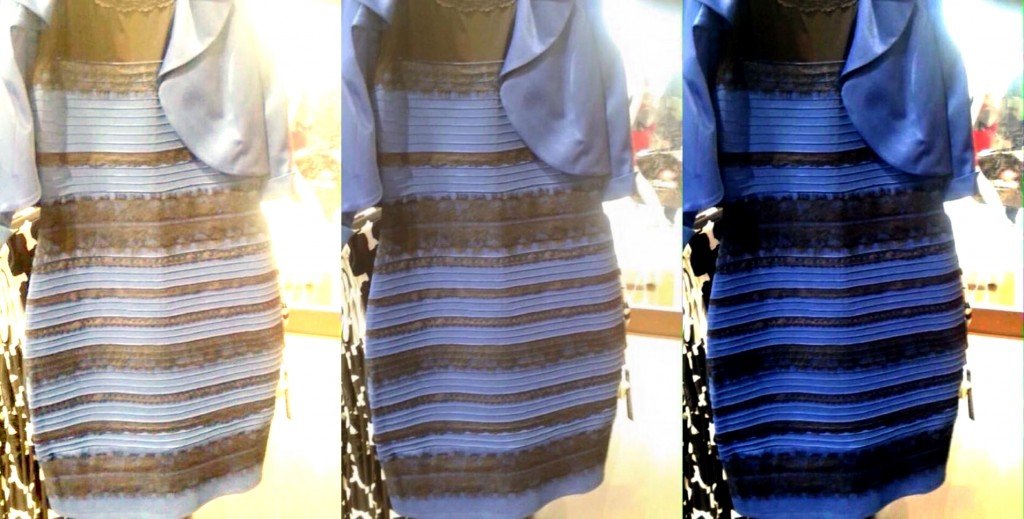
Scientists specializing in vision proposed that the variance in color perception stemmed from differences in interpreting the lighting conditions surrounding the dress. Color perception is susceptible to changes in environmental lighting.
Ordinarily, the brain corrects for these changes, ensuring consistent color perception, a phenomenon known as color constancy.
However, the brain’s capacity for correction can falter. This is what creates optical illusions. Take the Rubik’s cube in the image shown below; despite both squares being identical shades of gray, viewing them under different lighting conditions creates the illusion of dramatically different colors.
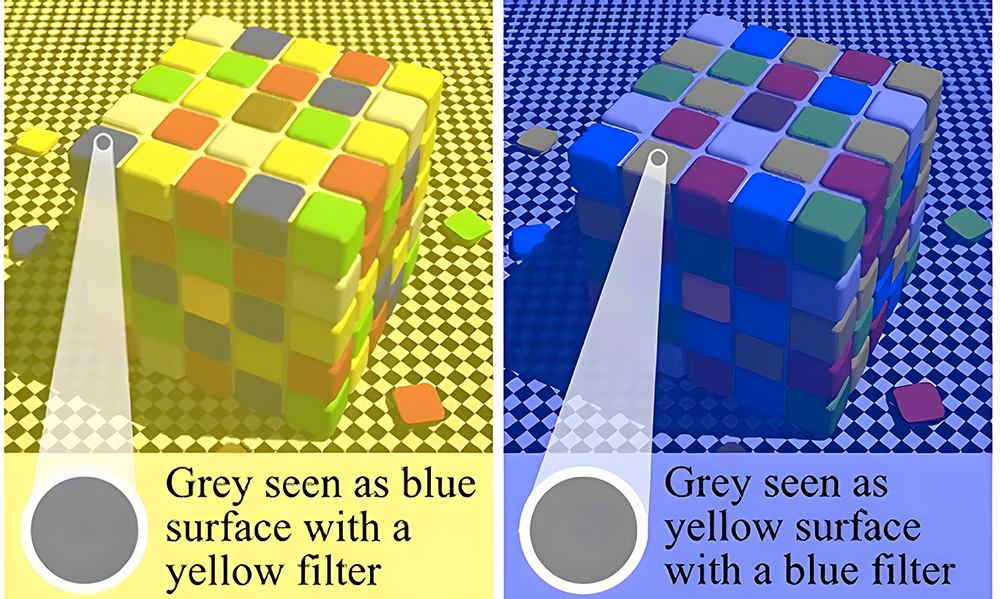
While the dress and Rubik’s cube scenarios share elements of optical illusion, there is a crucial difference between the two. Unlike the dress case, where individuals perceive the colors differently, the optical illusion in the cube case is universal—it fools us all in the same way.
The Role Of The Brain And Illumination
David Williams, Allyn Professor of Medical Optics and director of the Center for Visual Science, speaking to Vox, provided some insights to explain what might be happening in the dress scenario. He suggested that since the photograph of the dress lacked sufficient information about illumination conditions, some viewers may perceive it as brightly illuminated, while others may see it as less brightly lit.
Perceiving brighter illumination may lead the brain to assume that the dress is made of darker fabrics, such as blue and black. Conversely, perceiving dim illumination might suggest that more light is being reflected off, causing the dress to appear gold and white.
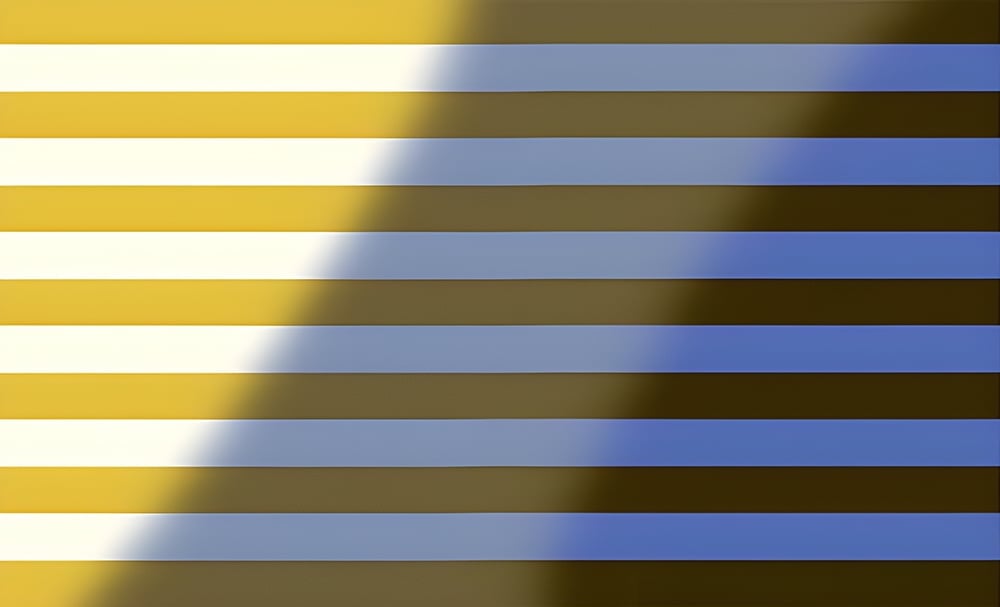
When asked about the divergence in assumptions about light illumination among different people, Williams speculated that it might be due to differences in the way the brains of different people worked.
How Animals See Color
Different species have varying numbers and distributions of photoreceptors, which are influenced by their habitats. For example, fish living in shallow, sunny waters typically have more cones than those in deeper waters.
These differences in photoreceptor number, distribution, and sensitivity can result in varied color perception. For instance, dogs, with only two types of cone cells, have dichromatic vision, unlike trichromatic humans. This makes them less sensitive to red and green hues. Consequently, a red object may appear brownish or grayish to a dog, rather than standing out vividly, the way it does to us. The wavelength of “red” still exists, but were the dog to make a Pantone color wheel, there would be no red.
Some animals can detect wavelengths outside our visible spectrum. Bees can see UV light, along with blues and greens. For bees, a flower is more than just a pretty pink or vibrant yellow.
A Final Word
Colors play a significant role in various facets of everyday life, including art, culture, and politics. We respond to color viscerally and emotionally. Artists, marketing heads, and designers know this very well. Exploring color is therefore an exploration that contributes significantly to our understanding of emotions, as well as cultural and societal symbols.
References (click to expand)
- Grzybowski, A., & Kupidura-Majewski, K. (2019, September). What is color and how it is perceived?. Clinics in Dermatology. Elsevier BV.
- The science behind that absurd color-changing dress ....
- The White and Gold (No, Blue and Black!) Dress That ....
- The Fascinating Science Behind Color Perception.
- Colour - Psychology, Perception, Emotion.
- How We See Color.
- Bramão, I., Faísca, L., Forkstam, C., Reis, A., & Petersson, K. M. (2010, November 5). Cortical Brain Regions Associated with Color Processing: An FMRi Study. The Open Neuroimaging Journal. Bentham Science Publishers Ltd.
- Horridge, A. (2015, March). How bees distinguish colors. Eye and Brain. Informa UK Limited.




